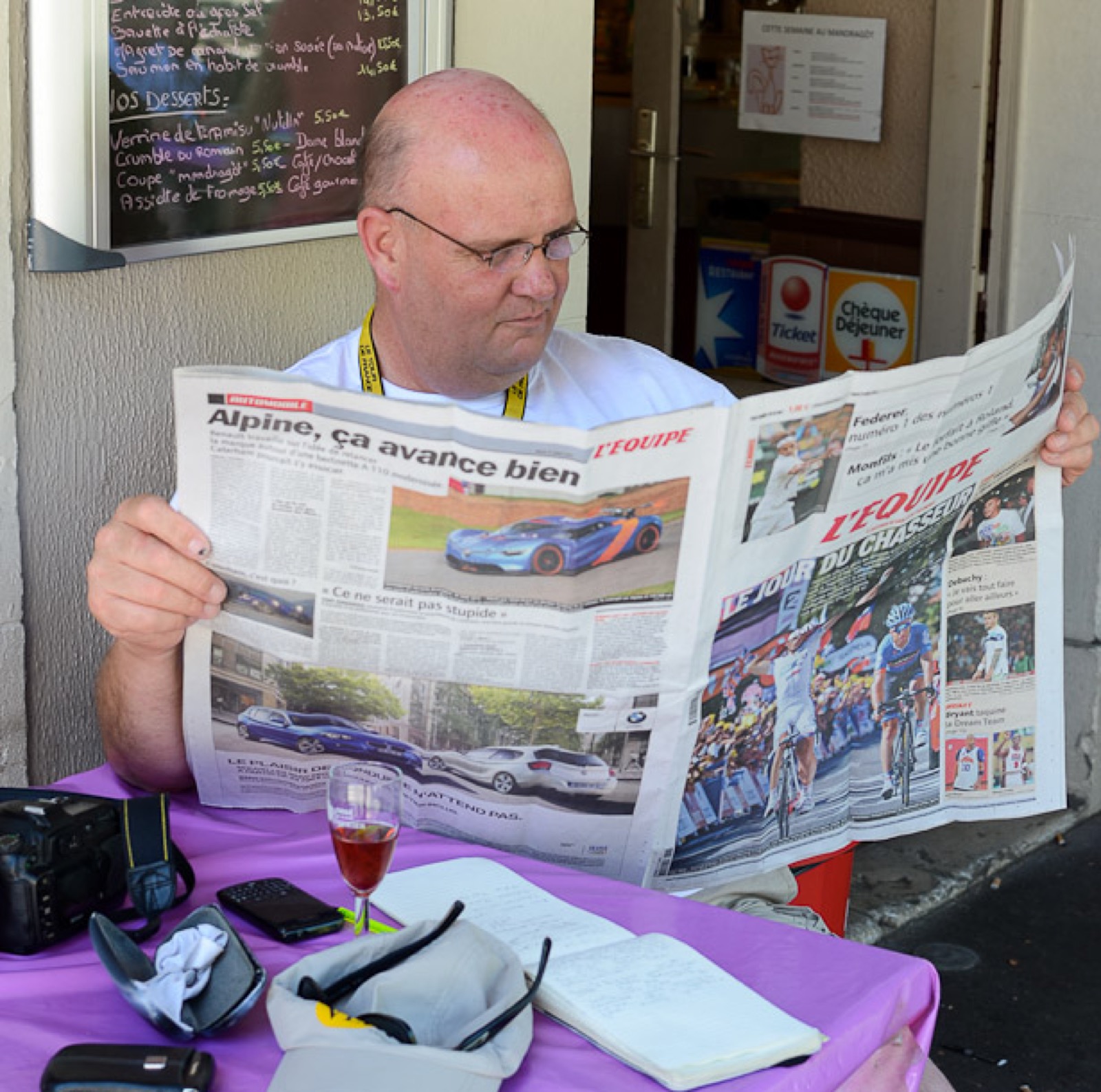The experienced American rider Colby Pearce was one of the guys looked after by Kris, Martin and Ed at some of this winters’ Six Days, including the recent event at the Ballerup Stadium in Copenhagen.
Having raced at elite level on the track at the Olympics, at World Cups and in the World Championships, as well as being a National Champion 14 times and holder of the US Hour Record (50.191), together with a spell working as the US Track Coach, Colby had seen most of what track cycling had to offer.
One element was missing though: Six Day Racing.
Keen to see how he fared in this small and atmospheric world, he got his first start in a Six a couple of years ago.
Colby has written his experiences up into a superb behind-the-scenes look into the “Six Day Sarcophagus”, and here at VeloVeritas we’re very lucky that he offered to share it with us; it’s a great insight into the scene. Enjoy!
* * *
The Time Capsule: An American Team in the Six Days, by Colby Pearce
This winter I was launched head first into the world of European Six Day racing. My partner Daniel Holloway and I were the first American team to be offered contracts in the pro Sixes since 2001. We have had the onus of proving ourselves to the skeptics and measuring up to the high physical and technical standards of these events.
These races are one of the last old school pillars of bicycle racing, and as such, we entered into a microscopic universe which has been trapped in time and is filled with ancient traditions, rich culture, and a strong sense of fraternity. I have probably learned more about what it means to be a professional bike racer in the four Sixes I have done than in the rest of my twenty year career.
Being offered a contract for the Six Days is not something that happens without good reason.
Riders must either be of extremely high pedigree (usually a World Champion or Olympic medalist) or have someone in the right place making recommendations.
There has been a demand for an American team to race the events. After all, the event did originate in Madison Square Garden at the beginning of the 20th century, and it is in the interest of Six Day promoters to have an international field on the start line for their events.
However the race promoters are very skeptical of anyone they are not familiar with, and even though I had a dozen World Cup medals in my quiver, it took some convincing to give us a shot.
This is where American Velodrome builder Dale Hughes came in.
Dale’s company, Velo Track, built the portable velodrome used in the Zuidlaren Six Day. Dale contacted Wim Jansen, the promoter of Zuidlaren, who on our behalf negotiated some contracts for other Sixes. This opened the door for new opportunity, so we owe a big thanks to both Dale and Wim.
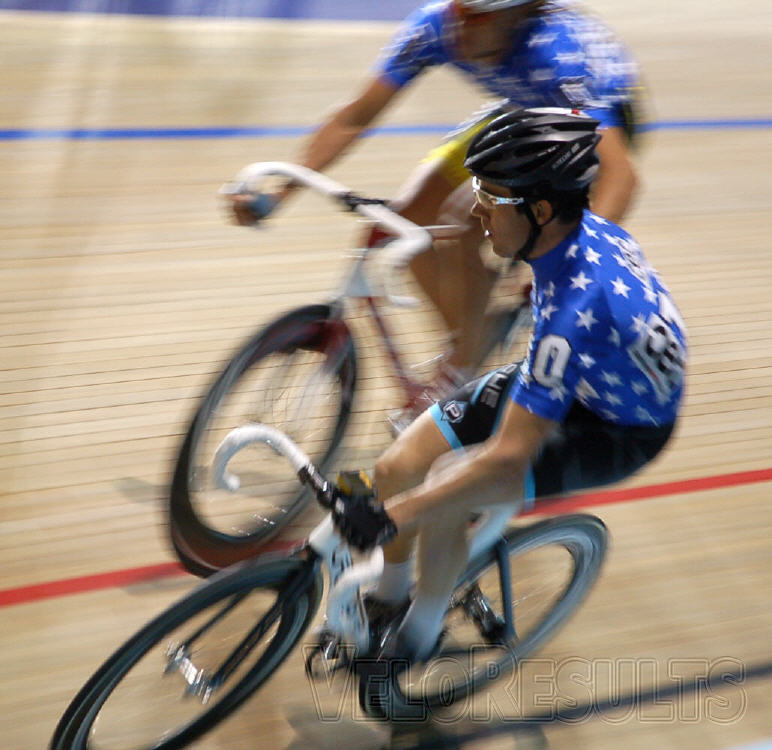
For myself, after nine years learning track cycling on the World Cup circuit, competing in World Championships and other big boy events, it was time for a change.
Six Days are the final missing piece in my track racing puzzle. This was the last aspect of elite level track racing I had not experienced.
I would have taken the opportunity to race some Sixes a few years ago, but for various reasons the opportunity was not there at the time. I am fortunate it has finally come together.
* * *
The other 50% of the team
Holloway proved himself ready for a winter of strenuous racing after passing the bar this summer in various forms.
First, we traveled to the Madison Cup in Trexlertown and won the event by a large margin; he raced the Tour of Missouri as a stagiaire for Garmin/Chipotle and helped Christian Vande Velde defend his jersey against a brutal onslaught by Columbia; we raced US Track Nationals and won every event we entered between the two of us.
So when Dale began to help me with Six Day contract negotiations in the fall, Daniel and I agreed to give it a shot. It’s maybe a bit of an odd pairing, since I am 36 and in the twilight of my career, and at 21 he is just at the beginning of the real substance of his. But I believe this season we have proven ourselves to be a solid team, in spite of the fact that he plays T-Pain endlessly on his laptop.
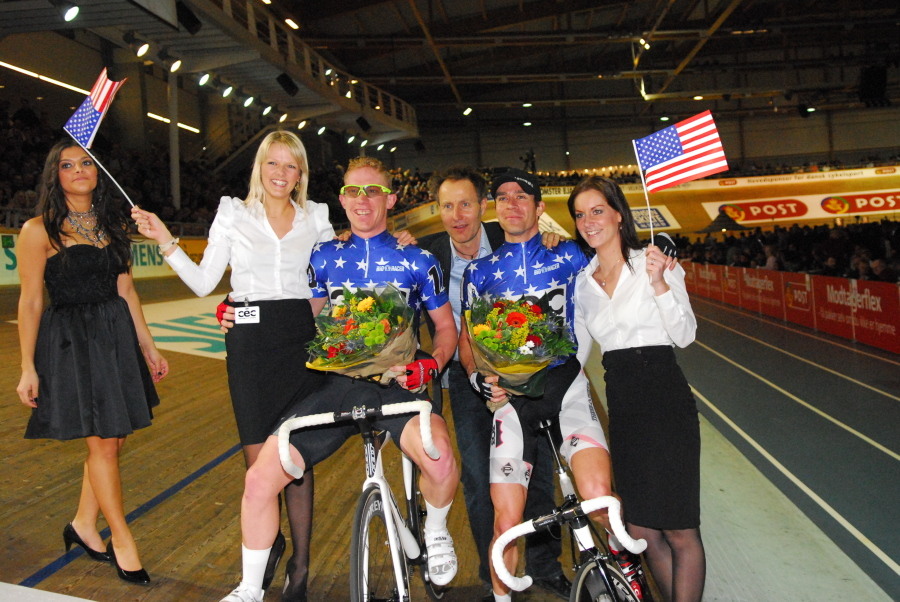
Traveling to our first event in Dortmund, Germany, I expected to be challenged and to discover unkempt corners of the basement of track cycling, and I was not disappointed.
When we made our first training ride in Dortmund on the newly assembled track, I was shocked at how bad the track surface was.
Some tracks are permanent fixtures (such as Copenhagen), and some are completely portable (such as Milan or Zuidlaren).
Some tracks are inbetween; with permanent corners, but removable straights, so that the facility may be converted to use for other events.
The resultant gaps between the removable sections are about one inch deep, which may not sound so big, but with 170lbs in your tires at 60km/hr, they are pretty much like an inverted speed bump in the world’s fastest criterium.
Riders told me that their seasons had been ruined from racing at Dortmund, because they left the event with open saddle sores from the track, which are really difficult to heal in a continuous season of Six day racing.
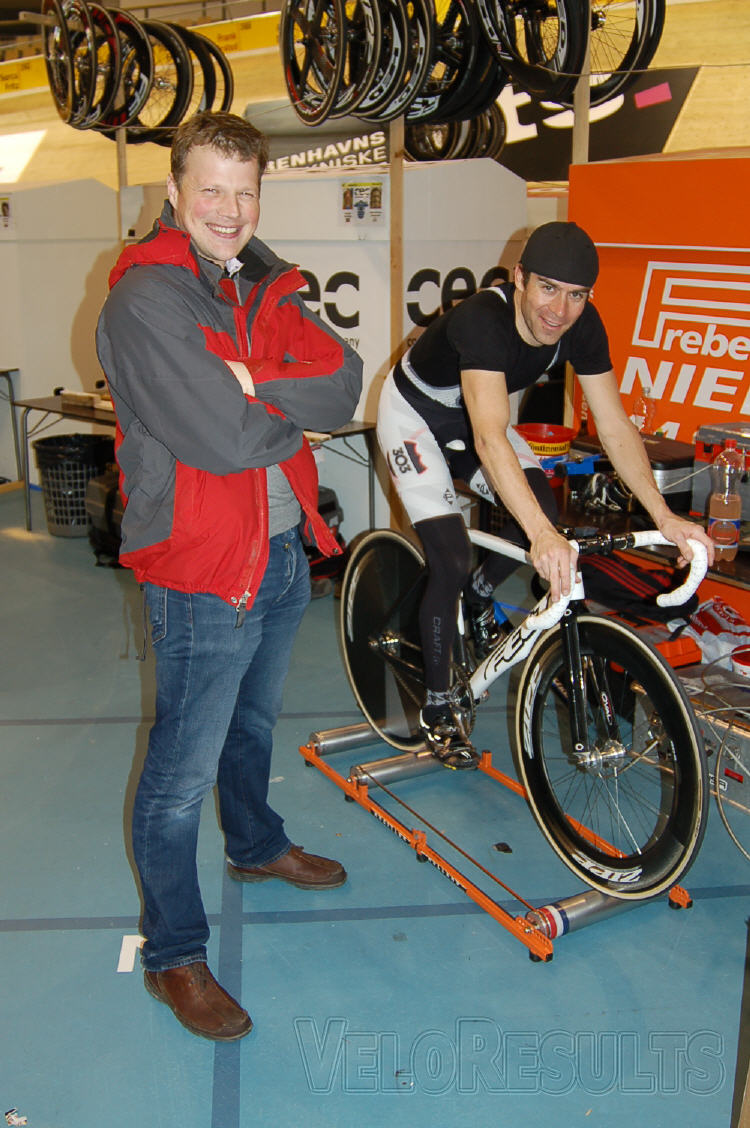
* * *
Each One is Unique
The atmosphere of a Six Day is a must see experience for any true cycling fan.
The color changes from city to city, but the palate is the same; the racing is fast, the crowds are large, cycling savvy – and inebriated.
The entertainment between races varies. Shows we have seen include a Blues Brothers tribute band, a Robbie Williams tribute band, a bicycle trials riding show with some guys riding their bikes up staircases and jumping over crowd volunteers (always female), a stunt motorcycle rider who was doing one handed wheelies at 40mph through the banking, women’s racing, U23 racing, a laser show, and a 15 minute film about Erik Zabel and his career, complete with pictures of him riding his BMX bike in an East German neighborhood when he was about six years old.
In Dortmund, we also witnessed a marriage proposal in front of about 10,000 people. She said yes, but you have to wonder if she felt some pressure.
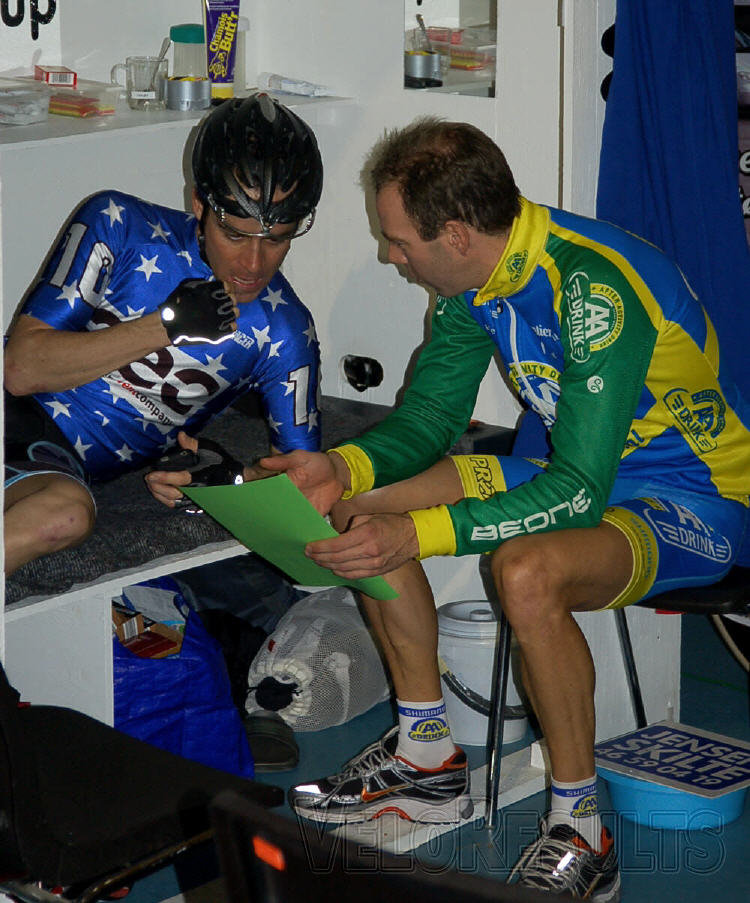
* * *
How it Works
The format of the racing at Six Days seems to be a mystery to most people, as it was to me until I actually raced my first Six. Most evenings consist of about three hours of competition spread out over five or six hours, including the entertainment.
Typically our evening begins with rider introductions.
All the teams ride around the track slowly in a double paceline, starting with the last team and descending numerically. There are usually about 14 teams on a 200 meter track.
The announcer reads the palmares of each rider as the spotlight follows the team, the DJ plays the appropriate music, and then the team pulls off and goes to the back. The interesting thing about this ritual is that this process also serves as the entire warm up. Warming up in the traditional sense does not exist in the world of the Six Day pro.
Being professional in this context means waiting until the last possible minute to put on your kit and show up trackside. By last possible minute, I mean literally less than five minutes before introductions begin riders appear, put on their shoes and helmet, look at the schedule for the night, and then ride off on their bikes.
The last few minutes of massage, cabin coffee, talk and joke telling are always preferred to actually making an early appearance.
After the introductions/warm up, one rider from each team stays on the track and contests three sprints with perhaps 10 laps in between. Typically, these laps are spent in an orderly paceline without attacking or aggression.
The riders simply ride on the blue line, taking one lap pulls until its time for the sprint to begin, and then the lead rider (who is leading by a subtle combination of chance and design) drops into the pole lane and begins the sprint.
The top five riders will usually sprint for the points, which go four places deep. When the sprint is finished the leaders swing up and the group reassembles, and the process happens again.
You can’t really call this a points race, at least not in the American sense. It is really three sprints separated by some slow laps.
Of course, just when you think you have the system figured out, one of the star riders will take off without warning at four laps to go, throwing a wrench in the whole thing. After the three sprints, your partner comes in, you do a slow speed madison exchange, and then he contests the final three sprints. The team with the most points wins this event.
This is one of many smaller races which happen before, after, and between the two big madisons, or chases.
At a 200 meter track, the long chase might be 250 laps (50km) and the short chase might be 125 laps. There are sprints for points, but not until the final 30 laps of the event. So for the first 200 laps of a long chase, the objective is to take as many laps as you can on the field, and then if you are on the lead lap in the final 50 laps, you have the right to contest the sprints.
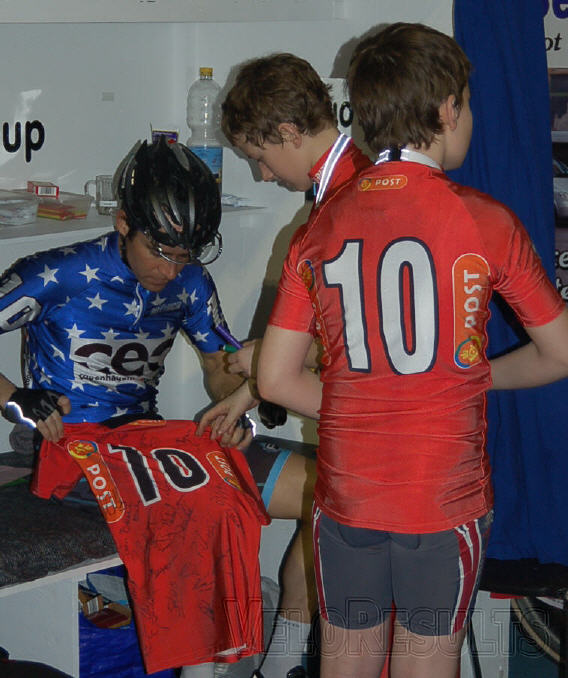
* * *
We Know Our Place
This brings me to a finer point of European bike racing, and European culture in general.
In comparison to the average American, most European people seem to have a much better understanding of and respect for their place in the pecking order – not just in racing but in regards to life in general.
Europe is not a place in which you commonly see a category 2 rider fighting for the wheel of Tom Boonen. This is because the average cat 2 in Europe understands that even if he feels great that day, and even if he has survived a the world’s hardest road race for the first time in his life, it is not his place to head butt Tom Boonen’s leadout man. He has not earned it yet.
An American, in contrast, would argue that it is his right to do exactly this. But what is the purpose of sprinting to win points at the end of a chase if you are not on the same lap as the leaders?
The Sixes are the ultimate expression of the caste system, and a rider or team is only permitted to achieve a certain level of success when they have earned that level.
There are times when you are given chances to prove your skills and strength, and other times in which the Big Boys are playing and you have to take a back seat. The art of being a Six Day rider is knowing and respecting the system.
It may seem archaic and unfair to the outside observer, but the riders who are at the top are extremely skilled, are very hard workers, and have been doing it for years and years.
They fought long and hard to climb the ladder, and so shall you. If you go against the grain in this type of environment, you will encounter a caustic friction which will work against your progress on many levels.
Six day racing really is a type of fraternity in this sense; it is the ultimate Good Old Boys’ club.
When you respect the system, work hard and put your balls on the line, you will gain the respect of the established riders.
If you race hard at the wrong time, screw up too much by being unaware or crashing, or fail to understand the way things work, you will be chased down, and will have painful bruises on your thighs from being flicked (literally) by the other riders.
Being a professional in the Six Days is like being admitted to a tightly knit family.
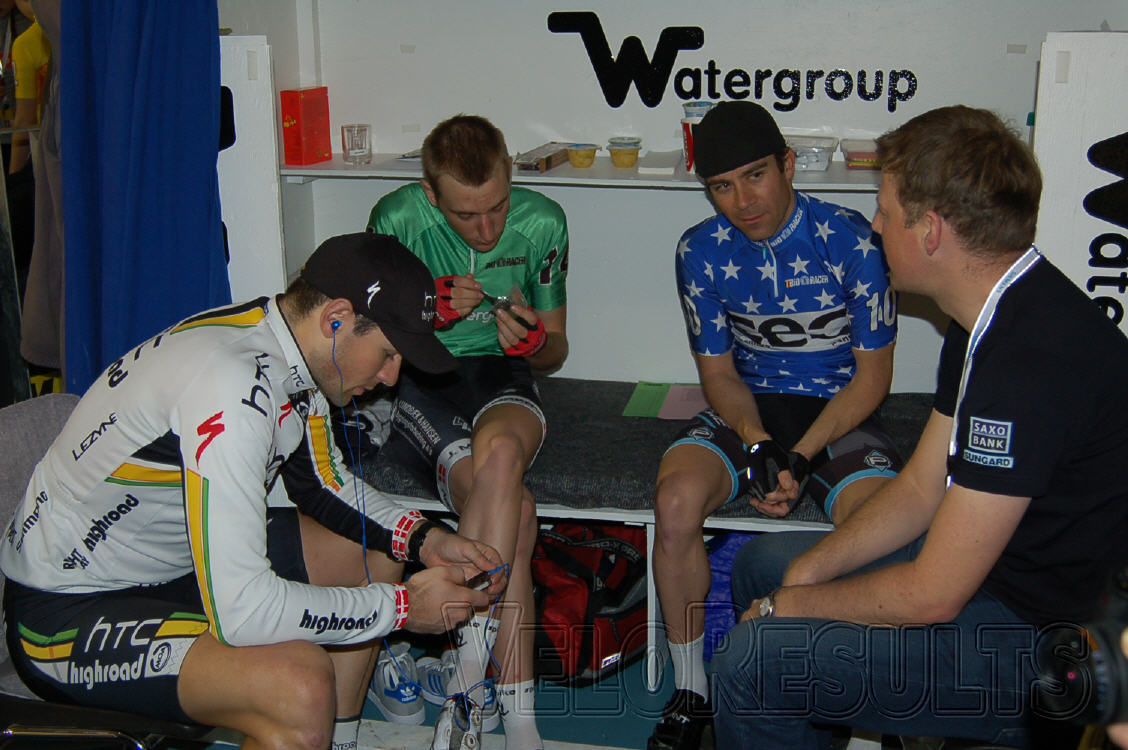
* * *
Fatigue, and How We Cope
Racing six consecutive nights on the track at high speeds in an 88 or 89 inch gear (53 x 16 is typical) is very fatiguing, but not in the same way as on the road. The cog and chainring are chosen so that the legs will not be cooked after a few nights.
The gear size is the perfect balance between being big enough so that you can race au bloc when you need to, but small enough that heavy quads will not limit your performance after multiple efforts. As Roger Young says, “live and die in an 88”. Perhaps Lance was not the originator of the concept of spinning to save the legs after all.
Fatigue comes in the form of CNS overload. The extremely high cadence demands (maximum cadences recorded for me nightly were consistently 158-160 rpm, with many sections of 140-145 rpm average for a few minutes) combined with the intense levels of concentration necessary to handle the bike precisely in technical situations, and the rock show environment of the Six Day (loud music, screaming fans and crazy lighting) leave the riders toasted at the end of every night, which is usually about 3:00 AM.
Riders sleep between nine and twelve hours a night in order to recharge the system before the next show begins. The riders stumble about in a fatigue —induced state, and it takes real will power at times to make the legs turn quickly. Days blend together into a Euro-pop music infused blur.
Add in two meals, a massage, and some internet time, and the result is a Six Day sarcophagus once the racing begins.
Every day is consumed by the competition.
Racing the Six Days is very demanding from a physical and mental perspective. The repetitive nature of the event can be a mind job; when you roll up to the start line and see 300 on the lap counter, and its 1:15 AM, reflection on the wisdom of your chosen profession is not recommended. Just focus on the moment at hand and absorb yourself in the effort. If that does not work, check out the podium girls.
One positive note is that most Sixes have finally banned smoking, which is nothing short of miraculous.
Europe is way ahead of us in many, many ways, but not in the department of smoking; it seems that almost everyone in Europe over the age of 14 smokes like a chimney.
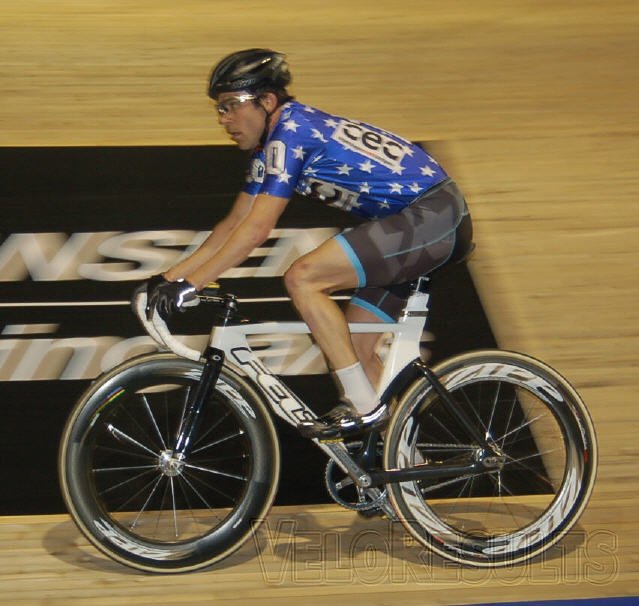
* * *
Sixes are Part-Race, and Part-Show
When it is time to race, we haul ass. The fifth night of Zurich this year we averaged 55.6 km/h for the 50km chase.
But there are times when the crowd must be engaged with more than athleticism, even if it is at the highest level.
Jokes are played, rules are broken, and occasionally creative license is invoked while on the bike. For example, in Zuidlaren this year (Google it, you might learn something about geography) there was womens’ racing.
A German rider decided to enhance his anatomy in order to appear more feminine, and get in some extra racing by joining in the women’s events. The next night, two of the women competitors appeared on the track dressed in referee’s gear during one of our events and gave him a “red card” in response.
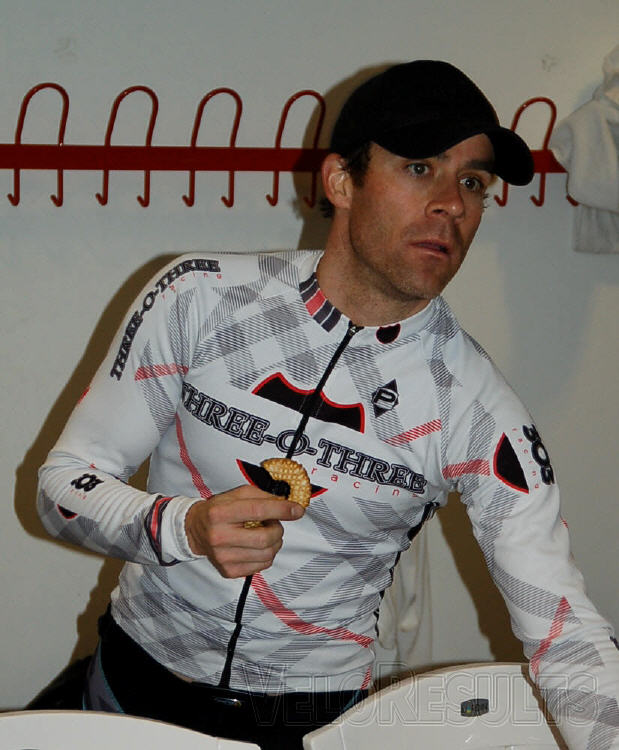
* * *
There’s a System
An interesting aspect of the Sixes is how ritualized and systemized everything is.
The mechanics and soigneurs do everything you can imagine for the riders, and it has been this way since the beginning of time. An athlete never touches his bike once during the racing except to sit on it and pedal it. The mechanics change the gears, swap wheels, glue tires, inflate tires, shine top tubes, change handlebar tape, and even hand the bikes to the riders for each event.
When the riders return to the cabins after each race, the mechanics wait by the apron until the rider approaches, slowing the riders with a firm grip so the rider does not back pedal and strain his legs to stop the bike.
Then the mechanic racks the bike until the next event, at which point it will be waiting for the rider, trackside, and after he mounts his machine he even gets a push to help his momentum. Every effort is made so that all the rider needs to do is rest and race his bike.
The soigneurs give hour long massages every day, hand wash all the cycling clothes, supply and administer creams and ointments for rashes, saddle sores, cuts or scrapes from crashes, and even apply chamois cream to the clean shorts with a spoon before the riders put them on.
Something I have learned is that in order to avoid smearing your legs with chamois cream when it has been pre-applied to your shorts, you must put them on starting with them inside out (see Jeremy Power’s recent Velonews quote regarding the order of application of embrocation and putting on of cyclocross shorts for related topics). The random list of details you assimilate during these events is endless.
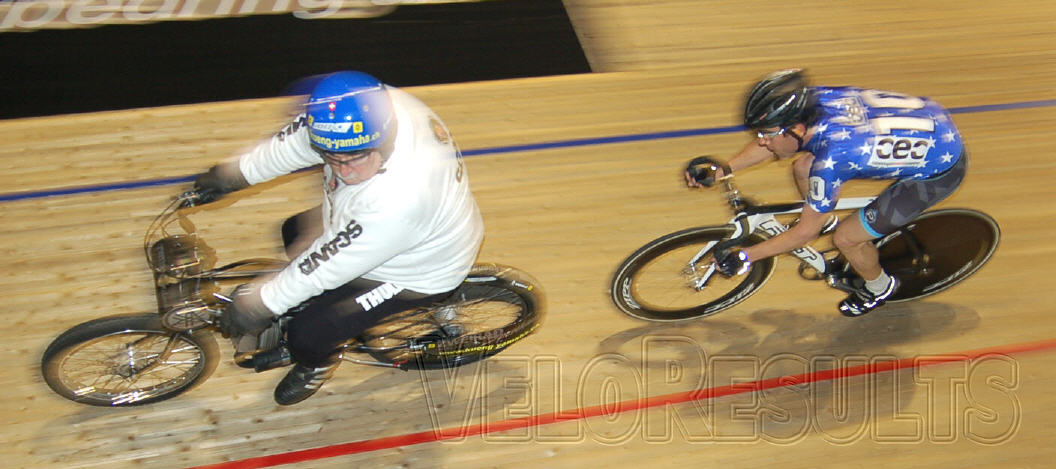
* * *
We Want for Nothing
Everything is supplied for the riders at any given moment.
When we walk from the massage rooms to the track to begin racing, we carry nothing accept our mobile phones.
Everything is brought to the track center for us, including our helmets, shoes, eyewear, extra shorts, undershirts and tricots. In case you were wondering, a tricot is what you wear on the upper hemisphere during a Six Day; it is supplied by the race organizer and bears the logos of the sponsors who have agreed to fund the contract for your team.
It resembles a jersey except the fabric has a much higher lycra content than anything anyone would normally wear, and there are no pockets.
The riders all wear specially-made Six Day shorts which are non-bib style and have doubly reinforced fabric on the waistline to prevent them from falling down, and extra thick chamois with no sculptured patterns which are all the rage in road bibs.
The tricots are tucked into the shorts to prevent them from flapping at speed and for a tidy look. Let me tell you, they look tidy!
After each race, the soigneur removes the rider’s tricot and undershirt, wipes him down with alcohol, and the puts a new undershirt and tricot on. The only thing they don’t do is tuck it in.
The old undershirt and tricot are washed right there, trackside, and put into mini high speed drier/ spinners, so they can be reused later in the night. The soigneurs will change tricots for the riders between six and nine times every evening. This is done so a rider is not sitting in a sweaty jersey between events, when he might catch a chill and become ill.
Also it helps riders smell a lot better when they are racing for several hours a night.
* * *
Our Sustenance
In between events, the riders consume hot tea with lemon and honey, race drink, cookies (“bis-qui” as Marco Villa refers to them) and snack on a gruel-like substance, which is made from rice and milk.
Each rider has his own personally labeled drinking cup, tea cup, chamois cream container, sponge and water tub, and alcohol washcloth.
Because the schedule involves many hard efforts, which are spread out over several hours, sometimes with long gaps in between events, it is critical for riders to snack regularly to keep blood sugar from dropping. It is also a dentist’s nightmare.
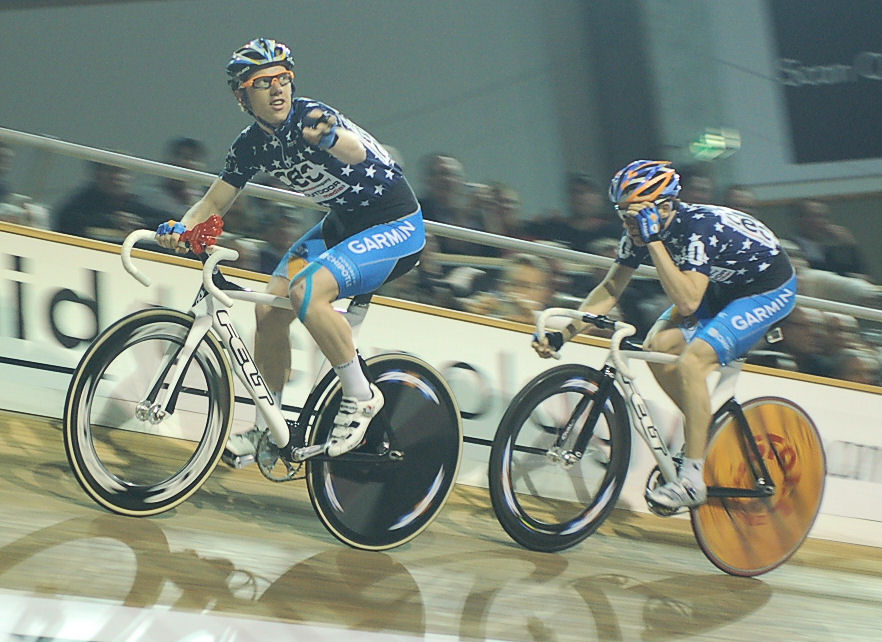
* * *
The Events We Do
The other events of the evening might include a team elimination (or “miss-n-out” in the US), short time trials (always performed as a team and include at least one exchange), derny racing (motorpaced events), and the balustrade sprint (a 20 lap event which is like an audience participation dance party until about 3 to go).
The team elimination is the most technically demanding event in the program; teams are sprinting into the back of the field to avoid being eliminated while negotiating exchanges. This is a highly entertaining event to watch. The time trials can be held over one lap or one kilometer.
Each team starts together at the rail, and the first rider builds the speed, then throws his partner into the race. They do another exchange if the race distance allows it, and the timing and technique of this effort is critical.
Usually you do this effort after sitting on your ass for at least 20 minutes, and the mechanic puts on a bigger gear for the timed events (53 x 15, or 95 inches). The combination of these two factors has a tendency to make your legs explode about halfway through the event.
Why don’t riders warm up on rollers before this event to ease the impact of the intense effort?
I have been waiting to ask that question all year, but there is a point when you stop asking questions and just do whatever Bruno Risi does.
Holloway had the honor of leading a few balustrade sprints in Zurich, when the usual rider in charge of this department was called away because his wife had gone into labor.
The Waveman leads the peloton, with all the riders in one long line at the rail, and engages the crowd with various antics, such as starting the wave (all the riders do the wave as well as the crowd in a coordinated effort).
Being The Waveman is a big honor and responsibility in the Six Day world. The last Waveman, Gerd Dorich, had his job for 10 years!
For his first time, Holloway proved to be a quick study and has already been working to refine his technique. My prediction is that he will add a decisively American twist to the role (he has already begun by adding some air guitar to the routine). Learning to do the wave while riding single file at the rail is the last thing I expected to be challenged by as a pro track rider, but here it is a job requirement.
* * *
We’re Friends and Colleagues
The camaraderie and friendliness of the riders who have been on the circuit for years is immediately obvious.
Riders always greet each other with a friendly “hello” or “ciao” and a look which indicates both respect and calculation in the same moment.
Stories are told in the massage rooms over coffee, and riders who live locally are quick to invite you for training or to help with the types of questions foreigners always seem to have.
The riders, soigneurs, and mechanics are all familiar after a short time and it resembles one big happy (if slightly dysfunctional) family.
Racing the Six Days this year has been an invaluable experience.
Hopefully it will enable to me to expand my level of instruction as I pass my knowledge on to future elite trackies. I have no doubt that Holloway will benefit from his winter of hard racing.
As Mark Cavendish said after racing some Sixes, “field sprints on the road are in slow motion”. Now after watching Holloway negotiate 14 teams on a 178 meter velodrome, I can hardly wait to see him in action this summer.
Thanks for reading.
CwP
As well as racing Colby runs a coaching business.
This article was first published on VeloNews.


